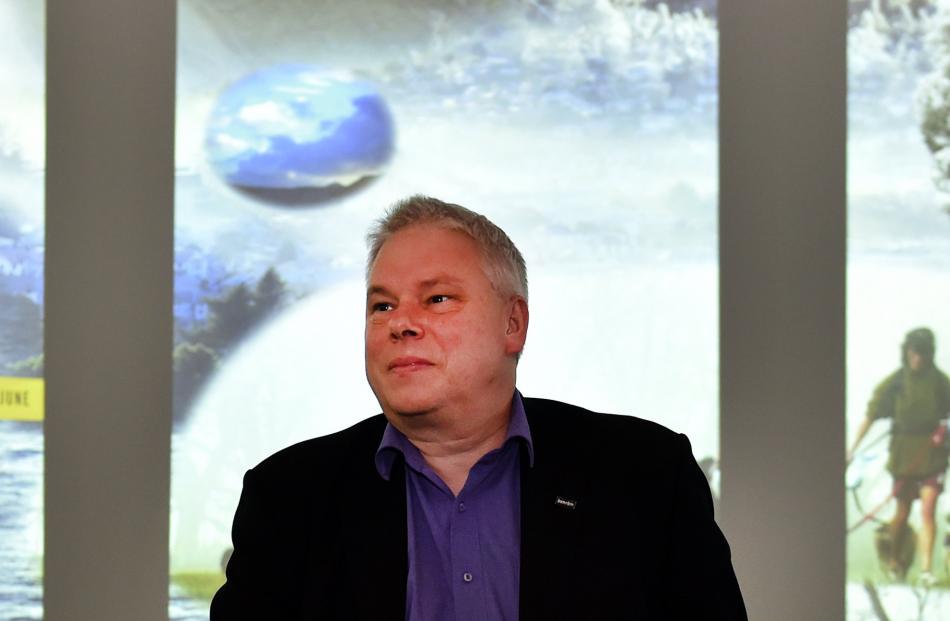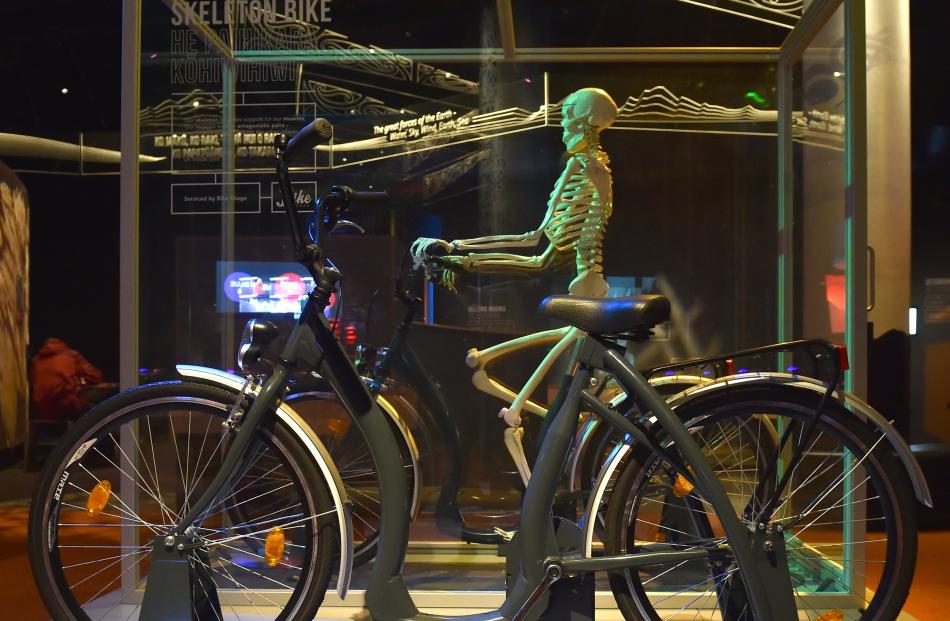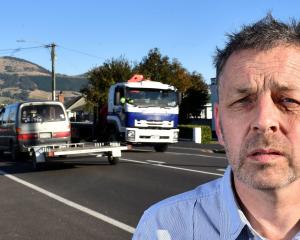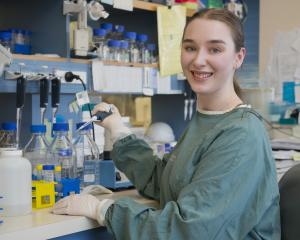As the Otago Museum prepares to celebrate its 150th anniversary later this year, John Gibb talked to Otago Museum director Ian Griffin about his first five years at the museum, the achievements and further challenges.
The Otago Museum's high profile, redeveloped science centre, Tuhura, and the Perpetual Guardian Planetarium, provide plenty of clear evidence about director Dr Ian Griffin's leadership.
Late last month - on May 22, 2018 - was the fifth anniversary of Dr Griffin's first official day as the museum's eighth director.
Dr Griffin (52) recalls facing plenty of challenges early in his time as director, including having moved from England to Dunedin with his wife and family.
Among the early challenges was to hire more staff to strengthen the museum's collection care, including conservation manager Nyssa Mildwaters and another conservator.
Dr Griffin reflected this week that he had succeeded former long-serving museum director Shimrath Paul.
Under Mr Paul's leadership the museum had already ''become one of the top visitor attractions in the South Island'' and had also won many awards, Dr Griffin said.
When he had been hired, Dr Griffin had a ''clear remit'' from the Otago Museum Trust Board to ''build on the work'' of the previous administration, to ensure the museum's long-term financial sustainability, and to create a ''museum of which the people of Otago would be proud'', he said.
Dr Griffin emphasised that the museum was a ''big team'', and he could not do his job ''without the help and support'' of the museum board, its ''very supportive'' chairman Graham Crombie, the museum executive team and ''above all the staff who all work so hard''.
Asked what had changed in the past five years, he highlighted, from a visitor perspective, the new planetarium, opened in December 2015, and the Tuhura Otago Community Trust Science Centre, which opened last December.
These were ''new major and award-winning additions to the visitor experience at the museum'', but he emphasised that the most significant changes had come ''behind the scenes''.
Museums were a bit like ducks, with some things apparent on the surface, but a great deal happening - including some busy paddling - below the waterline, out of sight.
A former professional astronomer, Dr Griffin is also an honorary fellow in the University of Otago physics department.
The museum has developed key partnerships with the university, including with the Dodd-Walls Centre for Photonic and Quantum Technologies, led by Prof David Hutchinson, and the innovative Lab in a Box science outreach project, created by Prof Peter Dearden.
These partnerships had supported the growth of the museum's new science engagement team, which worked closely with experts from the university to communicate their scientific research.
And, thanks to the support of the museum's Maori advisory committee, the museum had ''worked very hard to incorporate biculturalism into our work''.
During his time, the museum had also appointed its first curator Maori .
And a ''personal highlight'' had come when the museum's new science gallery, Tuhura, had received the Museums Aotearoa Award for Exhibition Excellence in Taonga Maori.
Also behind the scenes had come a big strengthening of the museum's conservation and collection-related staffing.
Five years ago, there were fewer than half a dozen staff working full time on the museum collections.
The collections team had since more than doubled in size, to about 14.
''We have some highly skilled staff, including two conservators, working to preserve and interpret our world-class collection [of about 1.5 million objects],'' he said.
''With the largest collections team in the museum's 150-year history, we are better placed than ever before to make sure our precious taonga [treasures] are preserved for future generations.
''A critical part of what the museum does is to look after the collection and make sure that it's there for the next 150 years.''
The collections team was working with the museum's design team to help create collections-based exhibitions such as Hakui, Women of Kai Tahu.
This exhibition had won a Museums Aotearoa award, and recently ''completed a successful run at the Canterbury Museum''.
Also out of public sight, the museum had also invested significantly in its heating, ventilation and air conditioning (HVAC) systems.
''And we are working to ensure that all of the back of house services - such as fire protection through sprinklers - are up to scratch.''
The museum had also invested in a new lift - the old one was was always breaking down - and had painted the entire museum exterior - a ''major job that took almost a year to complete''.
Dr Griffin was ''very proud'' of these new facilities, which ''rival the best anywhere in the world in terms of inspiring interest in science, nature, and culture''.
The new facilities also provided significant income, which helped offset the museum's running costs.
Public funding of the museum had been ''flat'' in recent years, and the museum received less funding from the Dunedin City Council than the Dunedin Public Art Gallery or the Toitu Otago Settlers Museum.
In this context, the income from the museum's commercial activities was ''an essential part of the mix'' that had allowed more staff to be hired ''in important areas such as collections''.
The museum was also attracting significant external grant funding, including nearly $1million last year, and more than $600,000 in sponsorship.
This ''increasingly important'' source of funding had been used to support the museum's expanded science outreach programmes and had contributed towards the Tuhura project.
Dr Griffin recalled spending his first few months at Otago ''reaching out to the communities served by the museum'', and meeting and listening to feedback from hundreds of individuals on ''what they felt was working and what needed to change''.
These included people who did and did not visit the museum, academics, Kai Tahu, and community groups.
At a later planning day at the Dunedin Town Hall, in September 2013, more than 150 people helped museum board members prepare the foundations for a far-reaching strategic plan for the museum over the next five years.
The plan, Te Ara Hou (the road ahead), provided four focus areas, on the museum's ''world-class collection''; engaging with the communities the museum served; inspiring lifelong learning; and ensuring business sustainability.
This plan had since been followed ''pretty closely'', and many of the changes in the way the museum operated had been influenced by it, he said.
The museum will later this year celebrate its 150th anniversary.
As Dr Griffin began his second five years as director, the museum faced some ''real challenges''.
The museum's new planetarium and upgraded science centre would ensure the museum's long term financial sustainability.
The next challenge was to upgrade all of the museum's major galleries.
With nearly a dozen galleries, some of which were nearly three decades old, this would be a ''major and very expensive task'', which, overall could eventually cost up to $30 million.
The museum faced big challenges, but had a ''great team in place'' and he was ''just as excited'' as he was on his first day as director about the institution's potential to change lives.














